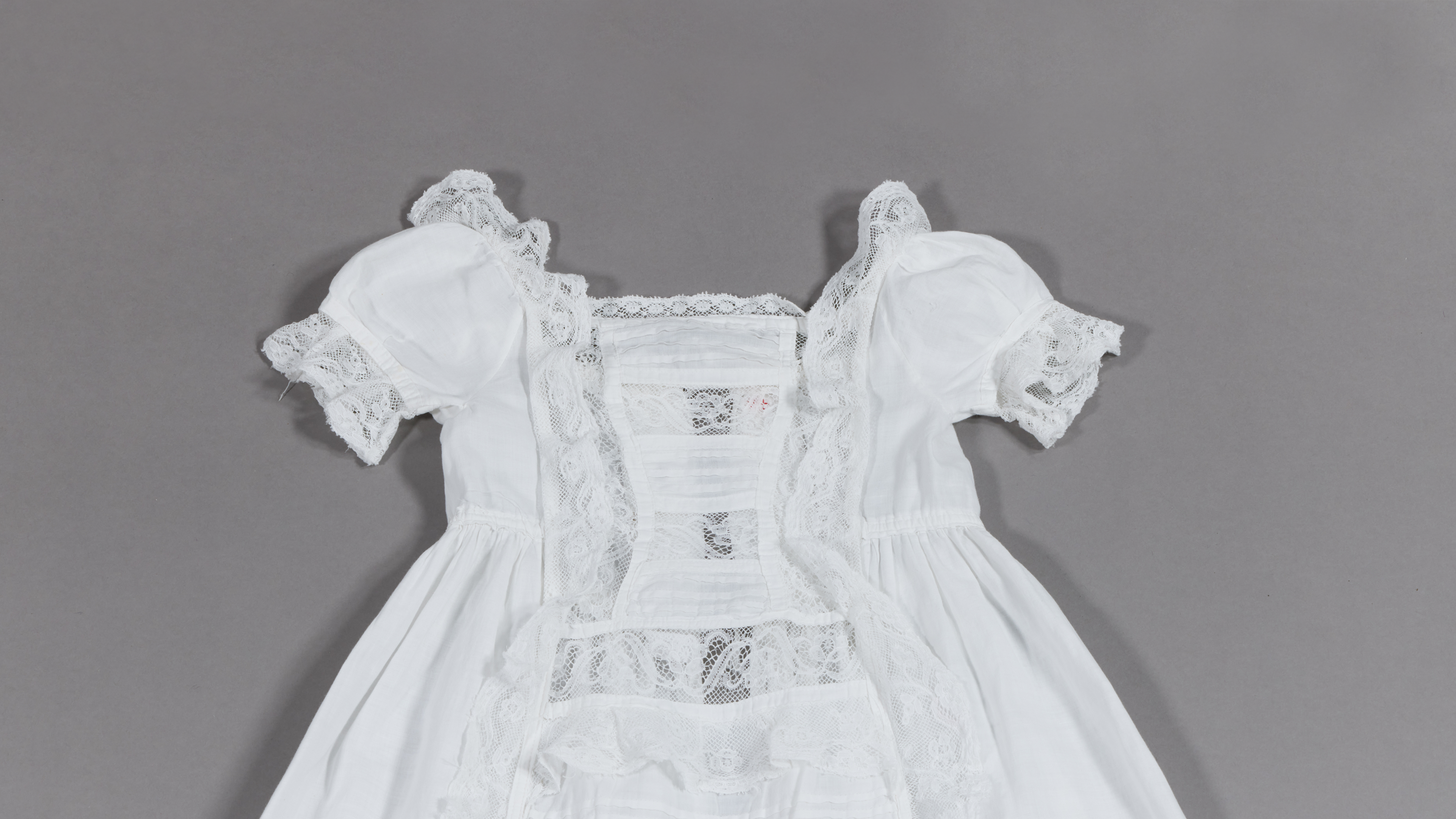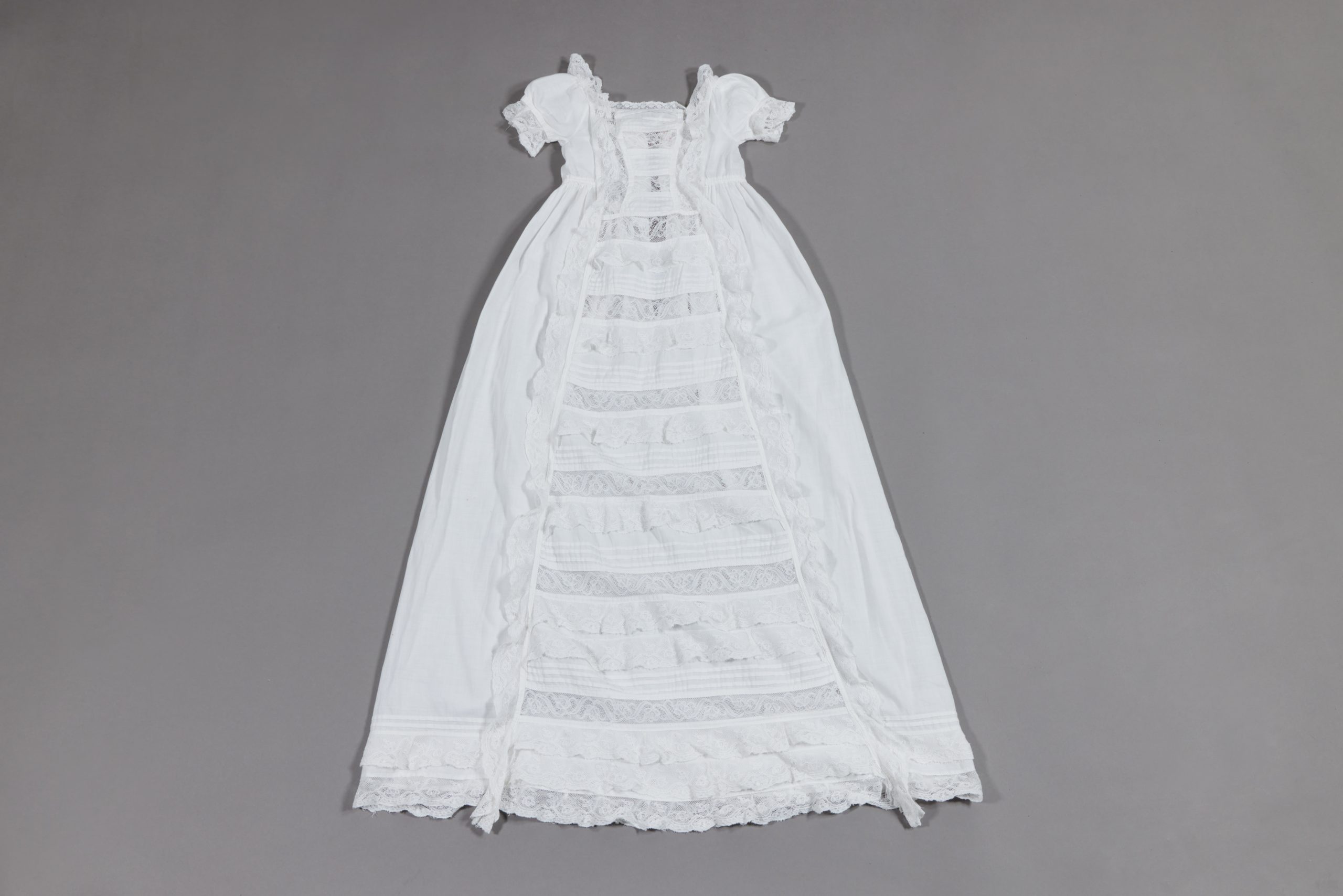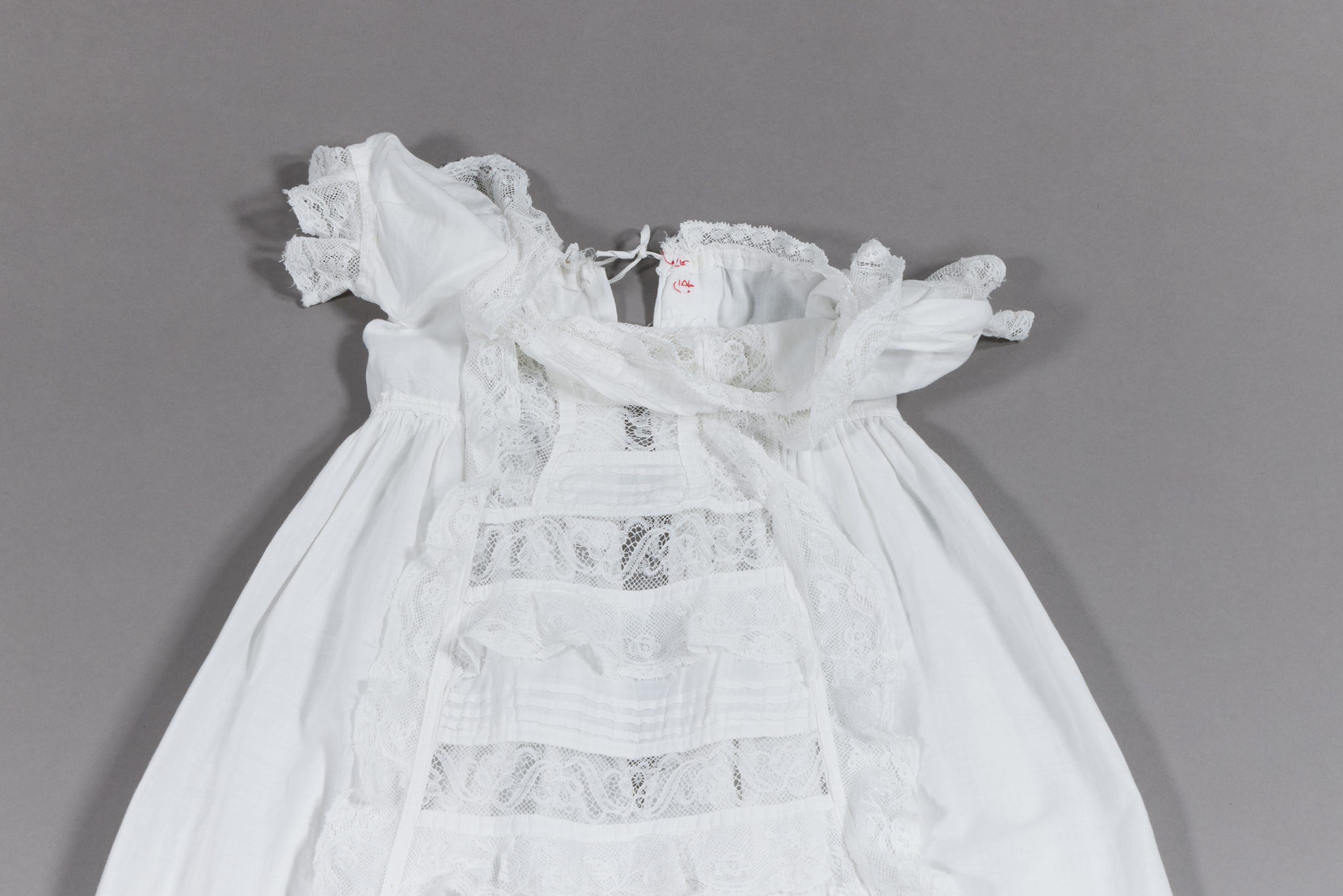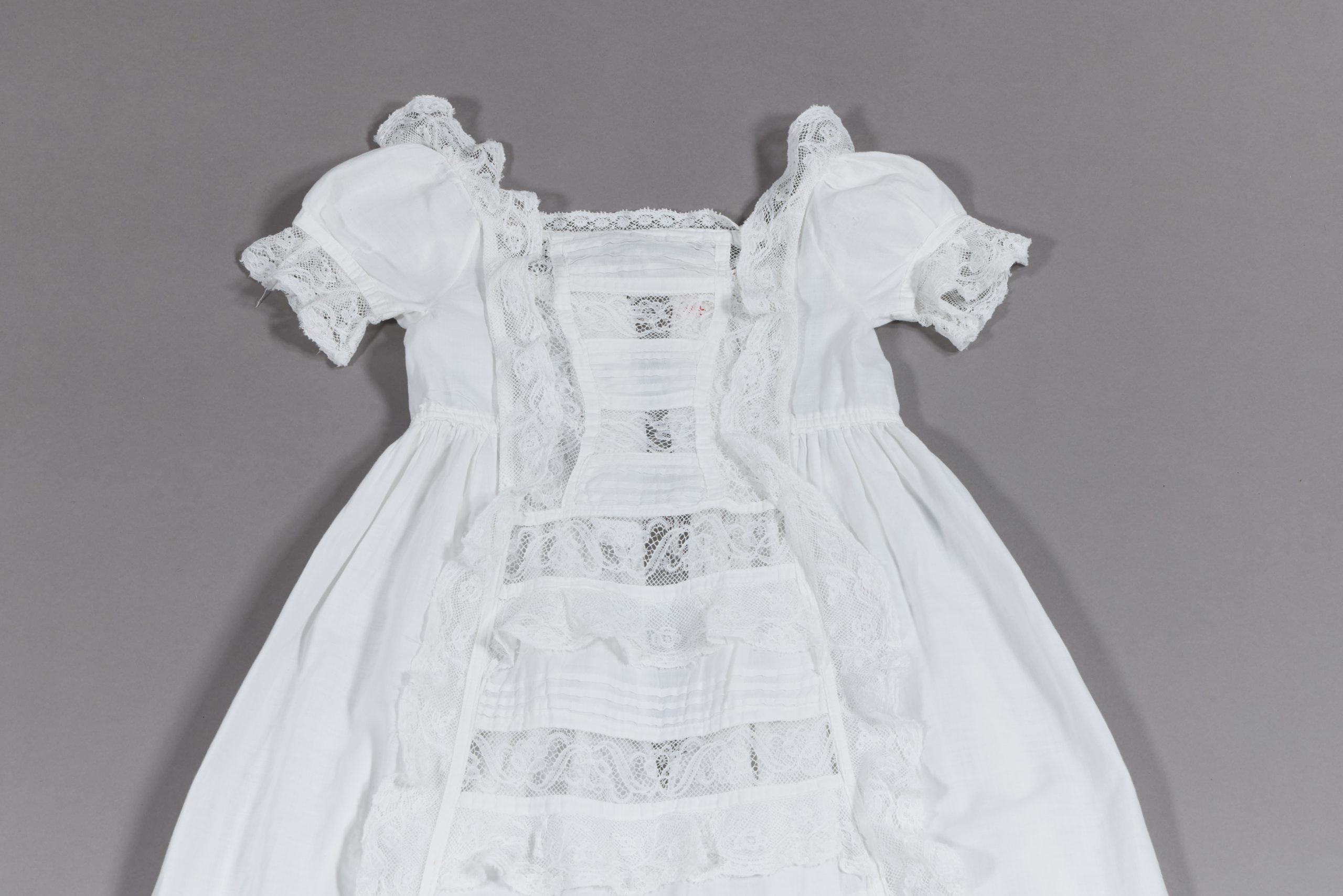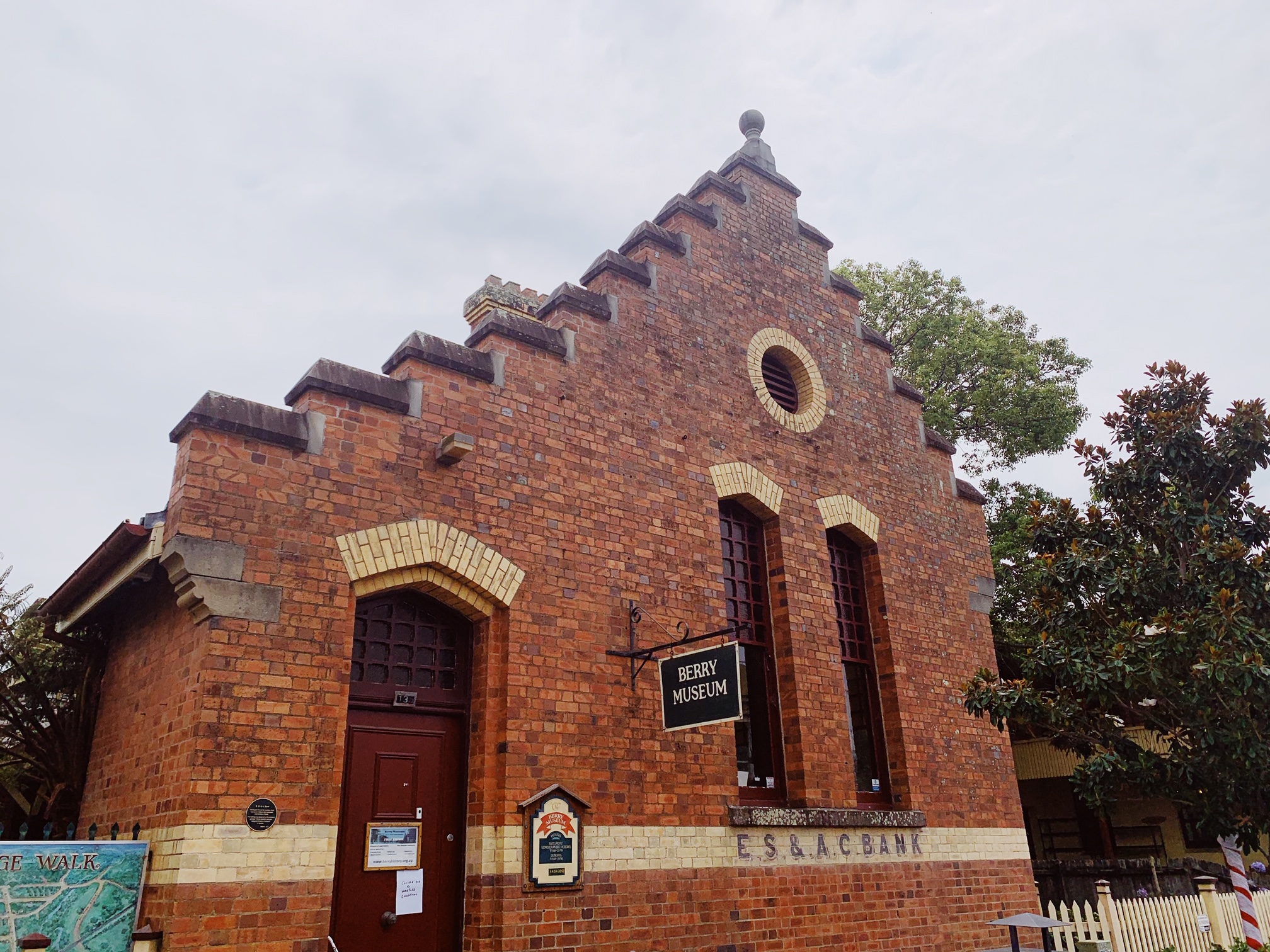Wetting the Baby’s Head
Beginning a Life of Faith
Christenings are an important life occasion. Surrounded by family and friends, parents lovingly hold their infant over the church font while a priest or pastor blesses the infant with consecrated water. A new infant is introduced to its community and the child’s name is formally announced. Historically, pregnancy and birth were very private affairs, and a christening was the first opportunity to publicly acknowledge a new baby. For many, the event is also viewed as an important religious ritual, the Christian sacrament welcoming a child into lifelong Church fellowship.
Prior to the 17th century, infants would be wrapped tightly in swaddling clothes (long strips of cloth), preventing the infant from moving during the ceremony. From the nineteenth century, christening gowns resembled current women’s fashions. With its short V-shaped bodice, low neckline, puffed sleeves and and long skirt, this christening gown imitates 1890s evening gown designs. Although influenced by current fashion, christening gowns also adhered to strong traditions usually featuring lace, short sleeves and white fabric to represent ‘purity’.
Before mass production of clothing, christening gowns were highly unique, beautifully hand-made garments. They were often retained in families and used repeatedly through generations. The drawstrings seen in the neck and waist of this gown were a typical feature, to allow the gown to fit babies of different sizes. With every wearer they accrued greater meaning and became prized family heirlooms.
This gown (c. 1905), is machine-made, representing the beginning of a transition from hand-sewing to machine-sewing. It was worn by Cicely Brantom at her own christening in 1905 and later by five of her relatives including her own son John in 1938.


